Once upon a time, Mercedes-Benz's naming scheme was all over the place. The CL was an S-Class coupe. A CLS was a coupe-like sedan based on the E-Class. The CLK was a coupe and convertible based on the C-Class. The SLK was a compact hardtop two-seat convertible. What did C mean? What did S mean? What did K mean? None of it really made sense. Recognizing this, Mercedes brought order to chaos by renaming models and bringing everything generally into the following hierarchy: A = subcompact, C = Compact, E = Midsize, S = Large. Those letters also corresponded with the core sedan models, while G = SUV and EQ = Electric. It's still probably hard to follow, but it does make more sense. And to keep things really simple, Mercedes wisely chose to not get too clever and just slapped "SUV" on the end of its new EQ models instead of concocting some sort of EQLE 350+ nonsense.
Any who, that's an extremely poor way of saying "The Mercedes-Benz EQE SUV" is the brand's new midsize electric SUV. As the name suggests, it should be similar to the Mercedes GLE (formerly the ML-Class, BTW). In terms of rear seat legroom, that totally tracks. The EQE SUV is within three tenths of an inch of the GLE. In terms of cargo space? Um, no. The specs say it has 14 cubic-feet of space. The GLE specs say it has 33.3 cubic-feet, so not really in the same ballpark. The GLC specs, meanwhile, say it has 21.9. Heck, the EQE Sedan has a 15-cubic-foot number.
You can find the EQE Sedan luggage test here and the GLC luggage test here.
Now, it must be stated that Mercedes uses the floor-to-seatback method of cargo capacity measurement, meaning that its numbers can be compared to each other, but not to most other companies that measure floor-to-ceiling. That's a big deal. That said, 14 cubic-feet seems incredibly rinky-dink even when solely compared to the GLC (I have not luggage tested a GLE).
What this car needs is a luggage test!
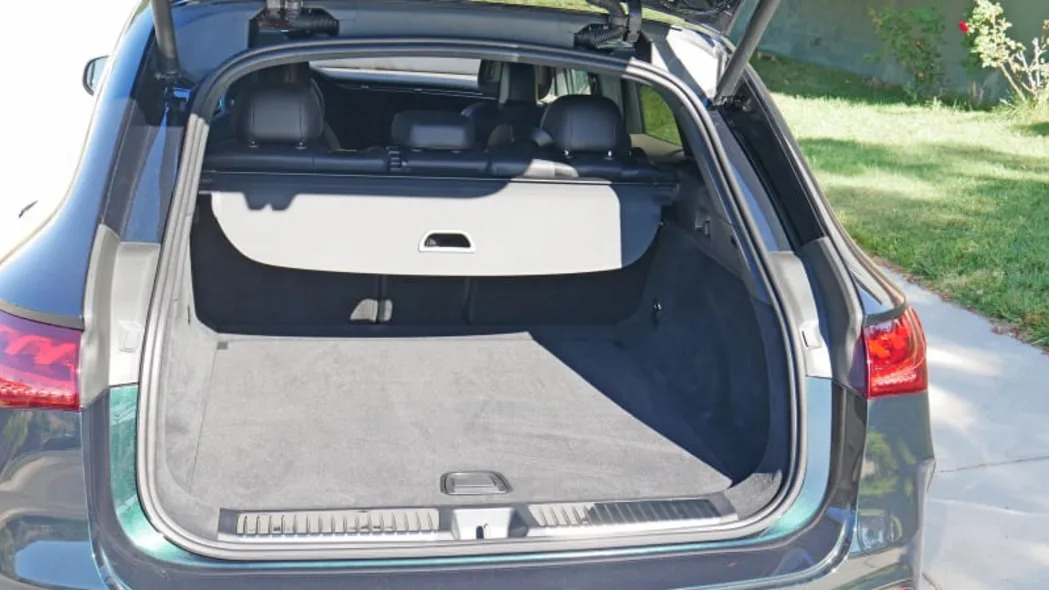
Just by looks alone, the EQE SUV cargo area is definitely more compact SUV than midsize SUV.
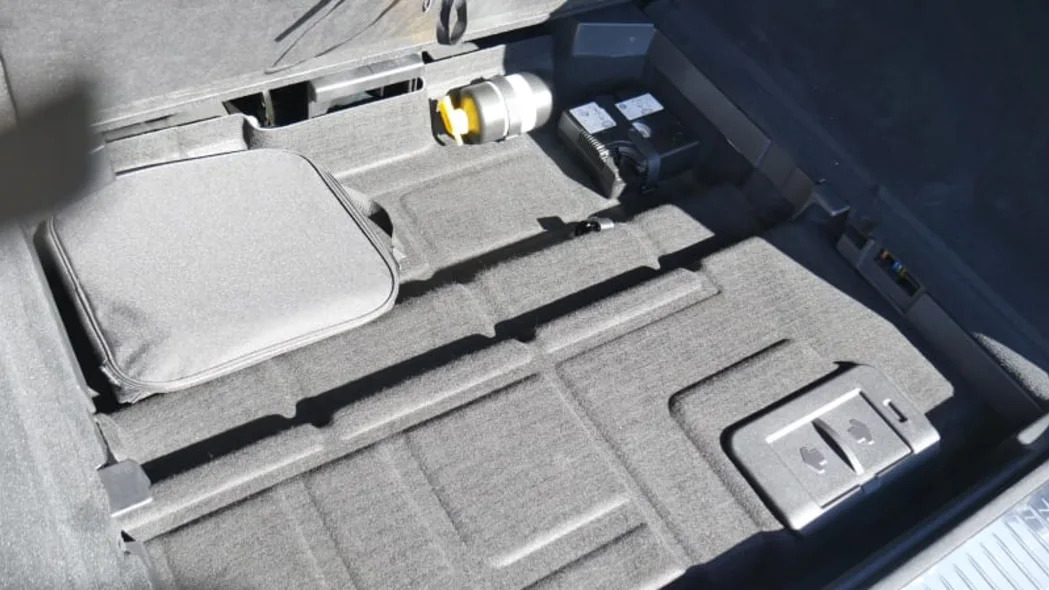
Unlike the EQSes, there isn't a deep underfloor cargo cavity. There is a place for the charge cord and tire goo, which is comparable to what the EQE Sedan has, but toward the backseat instead of close to the liftgate/trunk lid opening.
OK, luggage description boilerplate time: As in every luggage test, I use two midsize roller suitcases that would need to be checked in at the airport (26 inches long, 16 wide, 11 deep), two roll-aboard suitcases that just barely fit in the overhead (24L x 15W x 10D), and one smaller roll-aboard that fits easily (23L x 15W x 10D). I also include my wife's fancy overnight bag just to spruce things up a bit (21L x 12W x 12D).
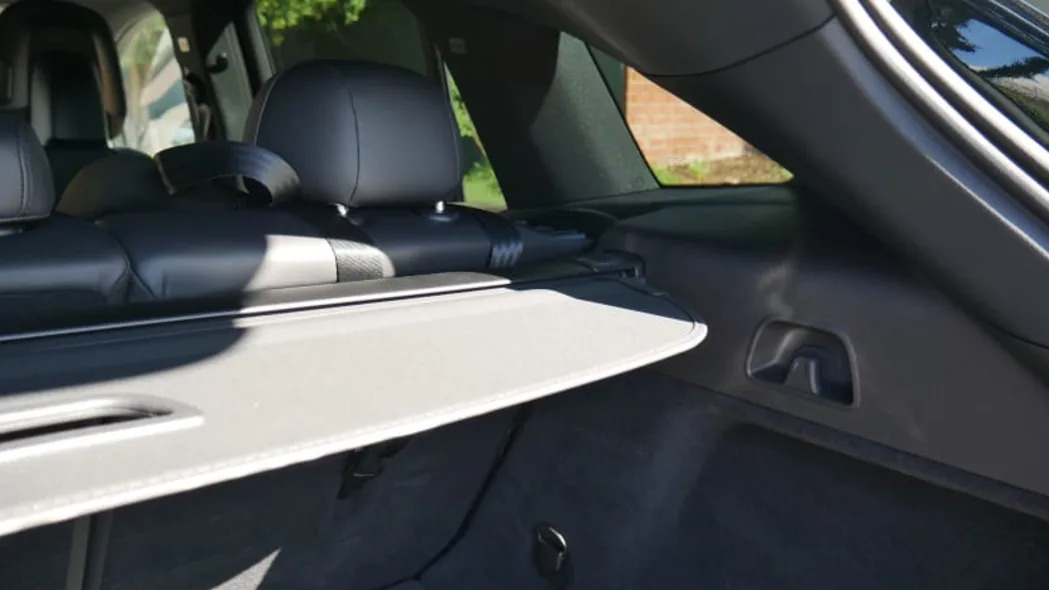

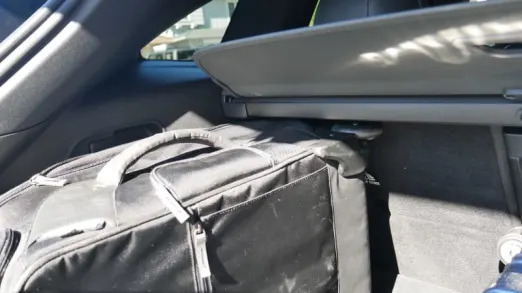
There is a cartridge-style cargo cover. When in place, the medium-sized carry-on bags fit underneath, the check-in bags do not and extend beyond the liftgate as a result. You can consider the cargo cover as representing the imaginary ceiling used to get that 14-cubic-foot spec.
Now, normally a cargo cover would result in me testing with and without it in place. BUT! Like the new GLC, the cargo area is wide enough for the cargo cover to sit on the floor, and importantly, voluminous enough to ...
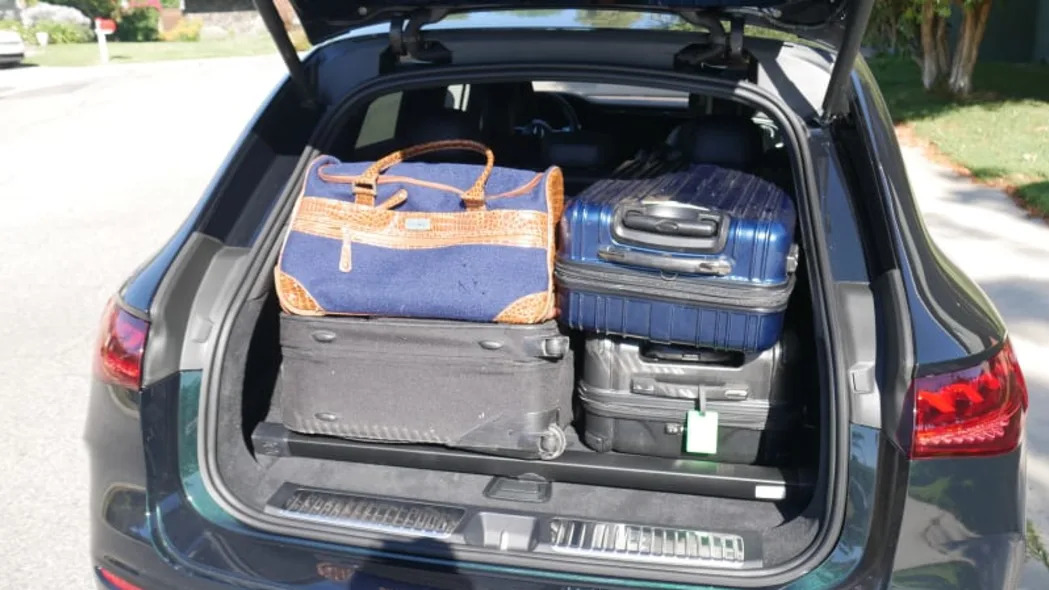
Fit all the bags! As such, all bags + cargo cover on board, equals no second test needed.
However, the cargo area is indeed smaller than the GLC-Class.
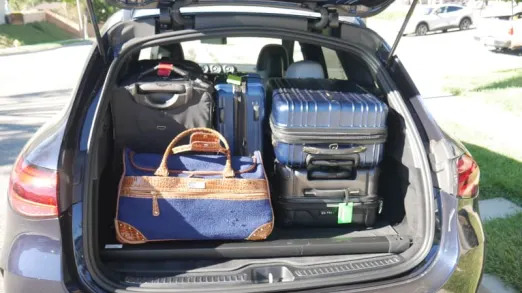
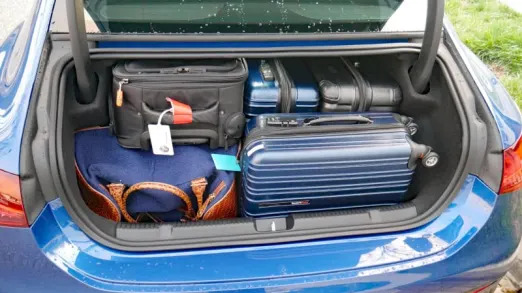
Above you will see the GLC, and notably how much space there is leftover, whereas the EQE SUV is basically filled. The GLC could fit an entire additional medium-sized carry-on bag.
Above you can also see the EQE Sedan trunk. All the bags fit here, but they are squished. However, you can definitely see how the EQE SUV can have a 14 cubic-foot cargo capacity number. My bags are technically extending beyond the rear seatback, meaning they go beyond the imaginary ceiling that encloses the area below. As such, if that ceiling was real (or the cargo cover was in place) all of them would not fit, and I would not in fact be able to carry as much in the EQE SUV as I could in the EQE Sedan. That's just silly, though. It's totally hypothetical and not useful to consumers trying to use specs to compare apples to apples.
Mercedes is really doing itself and customers a disservice by reporting its cargo capacity in this way. Sure, it is unsafe and usually impractical to load all the way to the roof — that's why I don't do that in these luggage tests. That said, sticking to this imaginary seatback cargo ceiling is unrepresentative of how people actually load a cargo area, and as it's a different method than most competitors use, it's not an accurate means of comparison. Trouble is, consumers don't know this, so they end up thinking the Mercedes SUV in question is smaller than it really is. That's not useful for the consumers, but it's even worse for Mercedes itself.
I think the solution is to report both numbers, but of course that might provide even more confusion. And Mercedes definitely wouldn't want that.
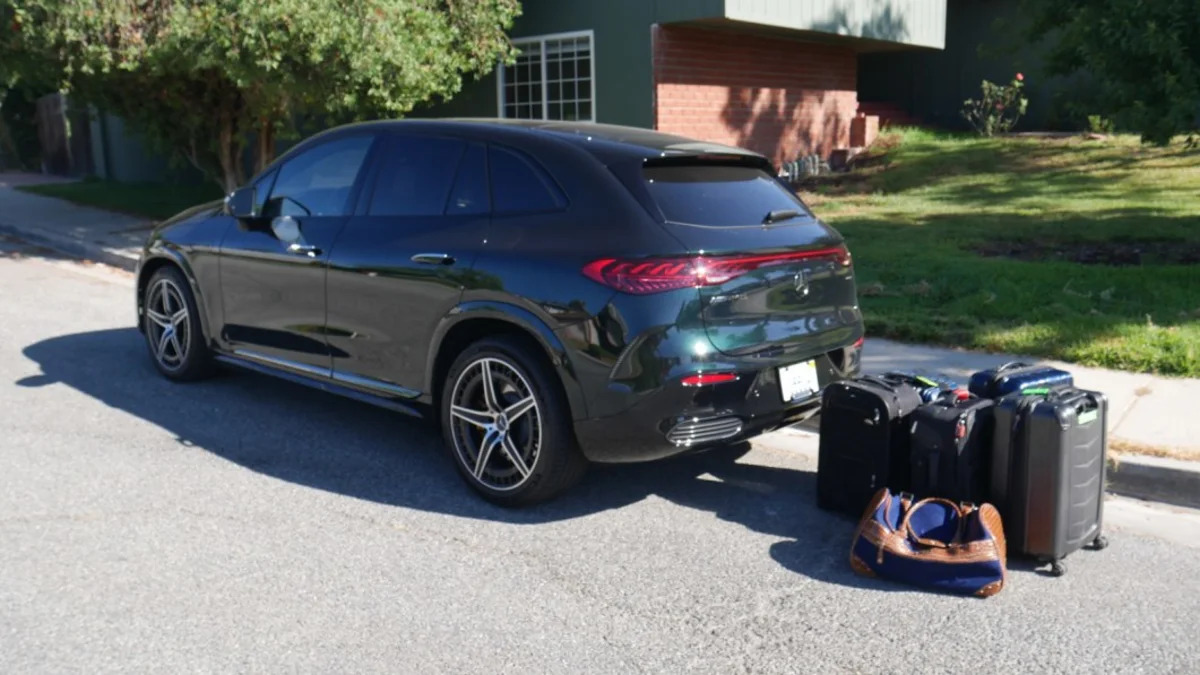
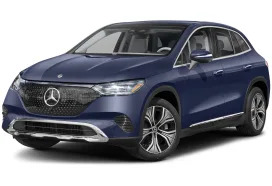
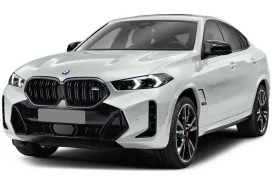
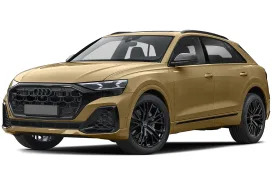

Sign in to post
Please sign in to leave a comment.
Continue